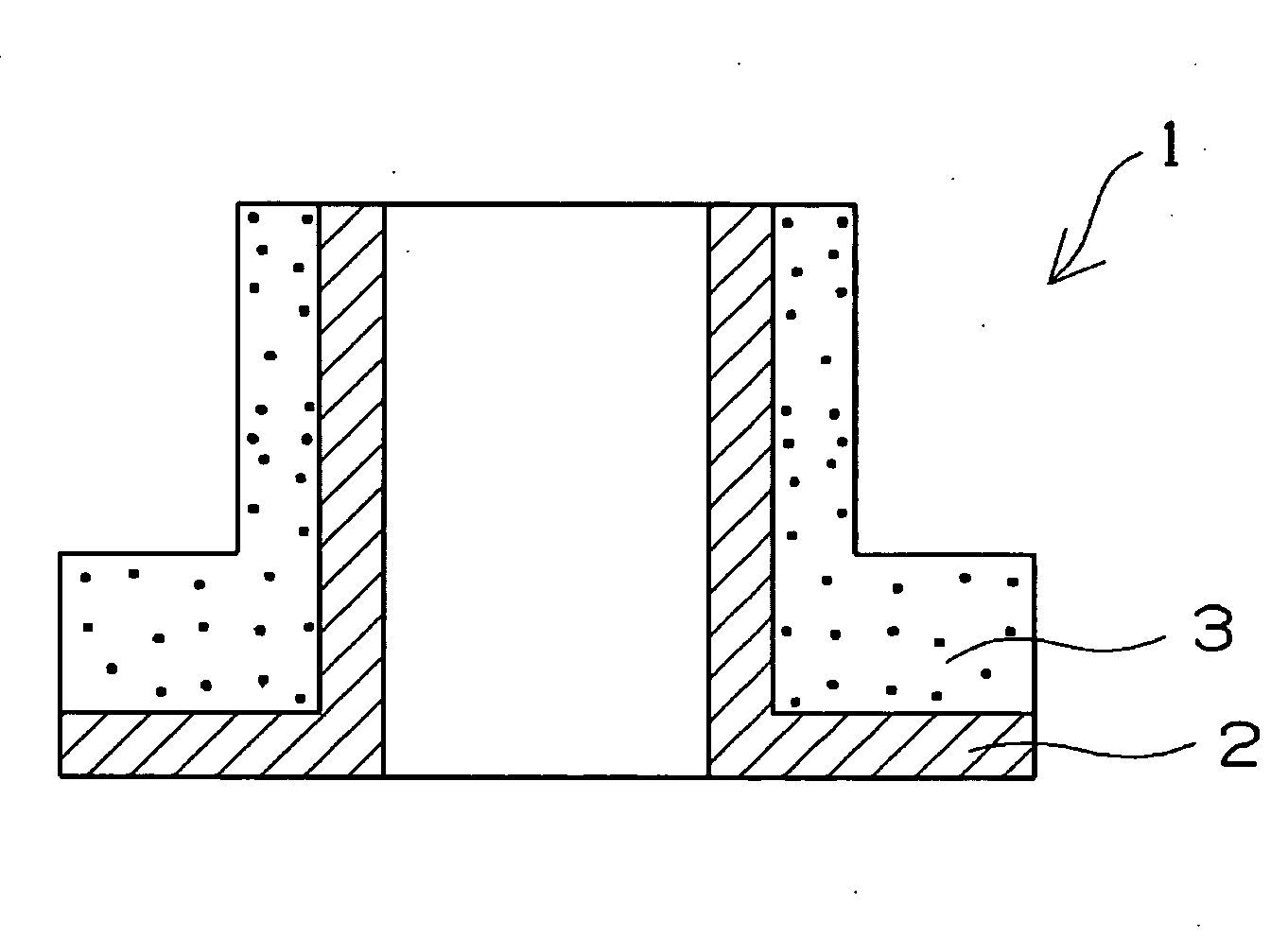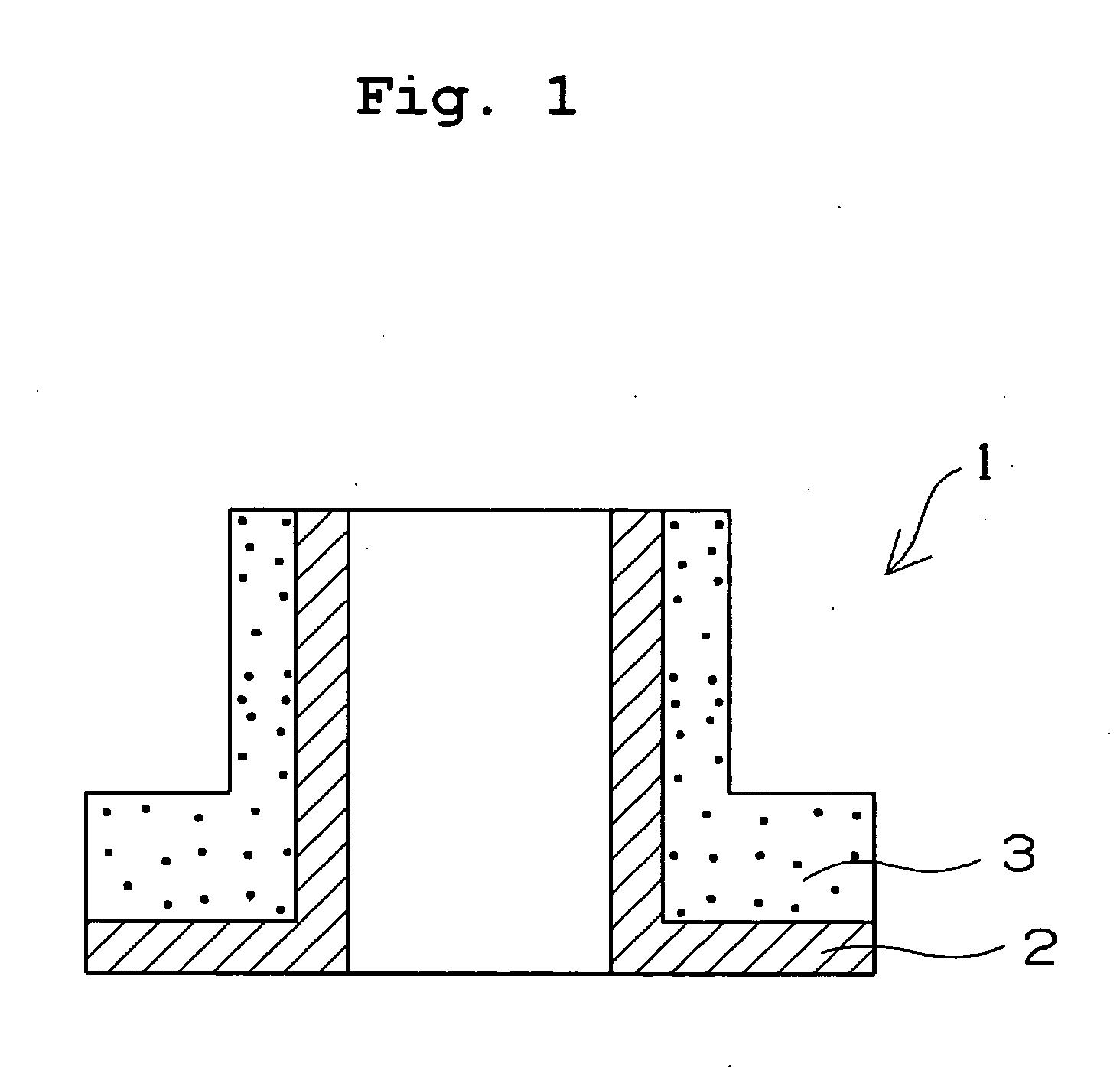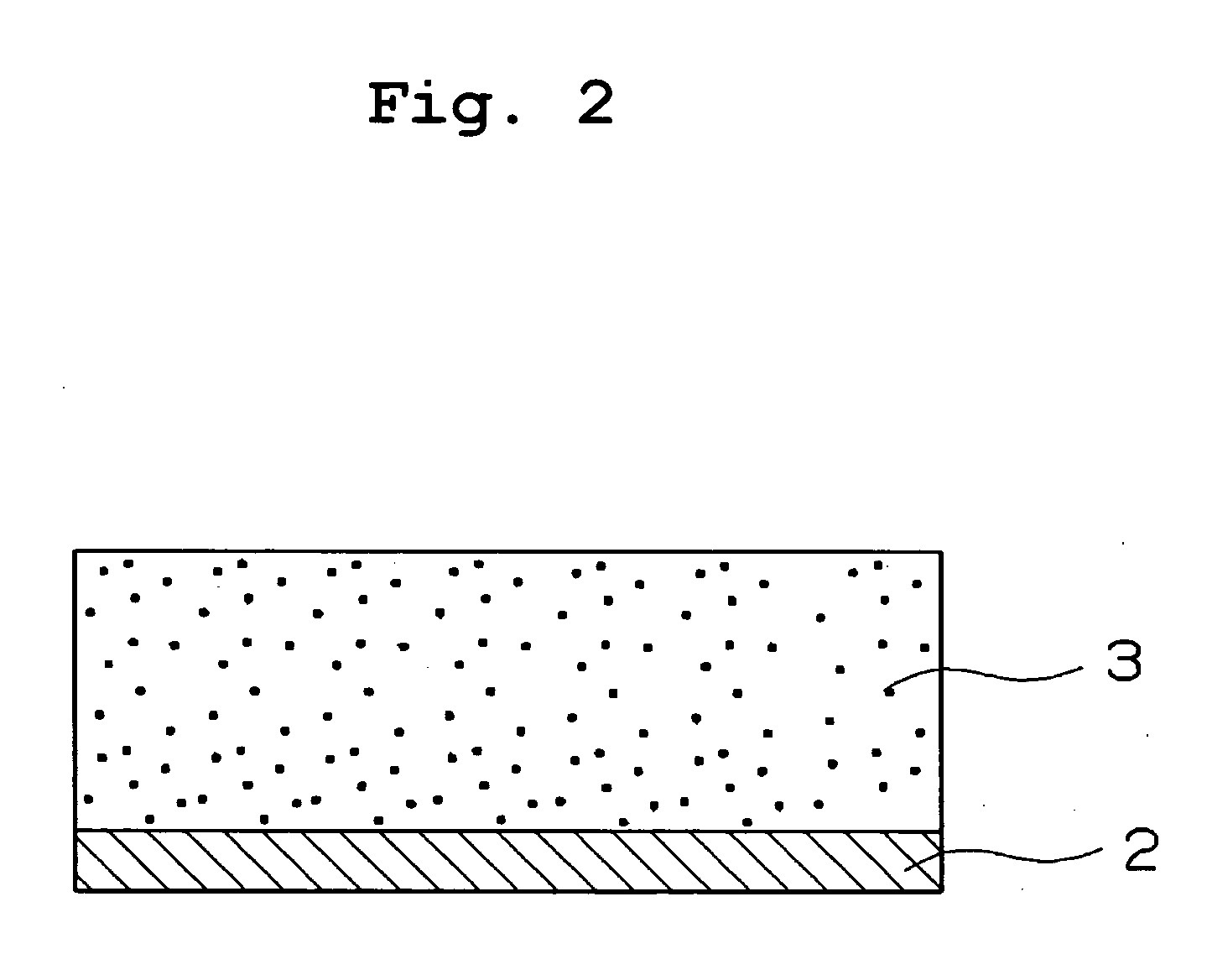Sliding Material and Sliding Bearing
a sliding material and bearing technology, applied in the field of sliding materials, can solve the problems of high molding temperature, affecting the performance of precision parts, and scattered fine particles, and achieve the effects of low friction coefficient, high heat resistance, and high strength
- Summary
- Abstract
- Description
- Claims
- Application Information
AI Technical Summary
Benefits of technology
Problems solved by technology
Method used
Image
Examples
example 1
[0105] Powder of the ultra-high-molecular-weight polyethylene (MIPELON XM220 produced by Mitsui Chemicals Inc.) and powder of sodium benzoate (reagent produced by Wako Pure Chemical Industries, Ltd.) were mixed with each other at a volume ratio of 50:50 for five minutes by using a mixer to obtain mixed powder. After the obtained mixed powder was molded by heating and compressing it (200° C.×30 minutes), it was cut into a molding having a predetermined size (specimen having a size of φ 3 mm×13 mm). The molding was cleaned with hot water having a temperature of 80° C. for 10 hours by using an ultrasonic cleaner to elute the sodium benzoate. Thereafter the molding was dried at 100° C. for eight hours to obtain a porous article having an interconnected hole porosity of 48%. The porous article was impregnated with silicone oil (KF96H-6000 (kinematic viscosity: 6000 mm2 / s (25° C.) produced by Shin-Etsu Chemical Co., Ltd.)) at 60° C. under vacuum to obtain a specimen. The oil impregnation ...
example 2
[0106] Powder of polyether ether ketone resin (150PF produced by Victrex Inc.) and the powder of the sodium benzoate (produced by Wako Pure Chemical Industries, Ltd.) were mixed with each other at a volume ratio of 50:50 for five minutes by using the mixer to obtain mixed powder. After the obtained mixed powder was molded by heating and compressing it (360° C.×30 minutes), it was cut into a molding having a predetermined size (specimen having a size of φ 3 mm×13 mm). The molding was cleaned with hot water having a temperature of 80° C. for 10 hours by using the ultrasonic cleaner to elute the sodium benzoate. Thereafter the molding was dried at 100° C. for eight hours to obtain a porous article having an interconnected hole porosity of 48%. The porous article was impregnated with the silicone oil (KF96H-6000 (kinematic viscosity: 6000 mm2 / s (25° C.) produced by Shin-Etsu Chemical Co., Ltd.)) at 60° C. under vacuum to obtain a specimen. The oil impregnation percentage was 45% with re...
example 3
[0107] The powder of the polyether ether ketone resin (150PF produced by Victrex Inc.), carbon fiber (MLD100 produced by Toray Industries Inc.), and the powder of the sodium benzoate (produced by Wako Pure Chemical Industries, Ltd.) were mixed with each other at a volume ratio of 40:10:50 for five minutes by using the mixer to obtain mixed powder. After the obtained mixed powder was molded by heating and compressing it (360° C.×30 minutes), it was cut into a molding having a predetermined size (specimen having a size of φ 3 mm×13 mm). The molding was cleaned with hot water having a temperature of 80° C. for 10 hours by using the ultrasonic cleaner to elute the sodium benzoate. Thereafter the molding was dried at 100° C. for eight hours to obtain a porous article having an interconnected hole porosity of 48%. The porous article was impregnated with the silicone oil (KF96H-6000 (kinematic viscosity: 6000 mm2 / s (25° C.) produced by Shin-Etsu Chemical Co., Ltd.)) at 60° C. under vacuum ...
PUM
| Property | Measurement | Unit |
|---|---|---|
| Temperature | aaaaa | aaaaa |
| Porosity | aaaaa | aaaaa |
| Porosity | aaaaa | aaaaa |
Abstract
Description
Claims
Application Information
 Login to View More
Login to View More - R&D
- Intellectual Property
- Life Sciences
- Materials
- Tech Scout
- Unparalleled Data Quality
- Higher Quality Content
- 60% Fewer Hallucinations
Browse by: Latest US Patents, China's latest patents, Technical Efficacy Thesaurus, Application Domain, Technology Topic, Popular Technical Reports.
© 2025 PatSnap. All rights reserved.Legal|Privacy policy|Modern Slavery Act Transparency Statement|Sitemap|About US| Contact US: help@patsnap.com



